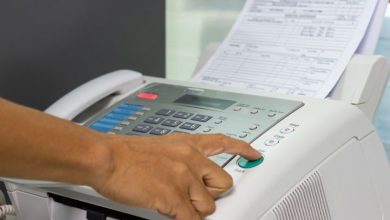Unpacking Credit Card Currency Fees (Kredittkort Valutapåslag)

When traveling internationally, using your credit card for purchases can be convenient and efficient. However, hidden within these transactions are currency conversion fees that can significantly impact your spending.
Understanding these costs is crucial for every traveler, especially those planning a trip to Norway, where currency exchange rates can significantly affect their expenditures. Uncovering the details of credit card currency conversion fees allows you to make informed decisions and save money during your travels.
Understanding Currency Exchange Rates
Currency exchange rates are the values at which one currency can be converted into another, determining the cost of goods and services in different countries. When you use your credit card for purchases overseas, these exchange rates come into play, affecting the final amount charged to your account.
Several factors influence currency exchange rates, including economic indicators, geopolitical events, and market speculation. In the context of international travel to Norway, understanding how these rates fluctuate can help you make better financial decisions during your trip.
For travelers visiting Norway, the Norwegian Krone (NOK) is the official currency. Exchange rates between the NOK and your home currency will determine the cost of your transactions in the country. It’s essential to keep an eye on these rates and know how they impact your spending while in Norway.
The Pros and Cons of Using Credit Cards vs. Cash in Norway
When it comes to making payments in Norway, both credit cards and cash have their advantages and drawbacks. Understanding the pros and cons of each payment method can help you make informed choices during your travels:
Credit Cards
Pros:
- Convenience – Credit cards are widely accepted in Norway, making them a convenient payment method for most transactions.
- Security – They offer enhanced security features, such as fraud protection and the ability to dispute unauthorized charges.
- Record-keeping – Statements provide a detailed record of your expenses, aiding in budget tracking and financial management.
Cons:
- Fees – The currency conversion costs and foreign transaction charges can increase the cost of your purchases.
- Acceptance – While major banks and issuers are accepted in most establishments, some small shops or remote locations may prefer cash payments.
Cash
Pros:
- Budget Control – Using cash allows you to set a specific budget and track your spending more tangibly.
- Acceptance – Cash is universally accepted and useful for transactions in smaller establishments or rural areas.
- Avoiding Fees – Paying in cash eliminates the risk of credit card currency conversion surcharges (kredittkort valutapåslag) and ATM withdrawal charges.
Cons:
- Security – Carrying large sums of cash can pose a security risk, especially in crowded or tourist-heavy areas.
- Exchange Rates – Currency exchange rates at exchange bureaus or banks may only sometimes offer the best value compared to credit card transactions.
Understanding the strengths and weaknesses of credit cards and cash can help you determine the ideal payment method based on your priorities and preferences while exploring Norway.
Tips for Saving Money on Currency Exchange When Visiting Norway
While managing currency exchange is crucial during your trip to Norway, employing strategic tactics can help you save money and maximize the value of your transactions:
- Compare Currency Exchange Rates – Before exchanging money, research and compare rates offered by different providers like banks, exchange bureaus, and ATMs to identify the most favorable options for your currency.
- Avoid Airport Exchange Services – Airport exchange bureaus often charge higher fees and offer less competitive rates. Consider exchanging a small amount for immediate expenses and conducting more significant transactions in the city for better rates.
- Use Local ATMs – Opt for ATMs from reputable banks in Norway to withdraw cash in the local currency. Check with your bank beforehand to understand any foreign transaction fees or ATM charges that may apply.
- Consider Currency Exchange Apps – Utilize mobile currency exchange apps that provide real-time rates and convenient conversion services. These apps can assist in monitoring exchange rates and making informed decisions on your transactions.
- Plan for Currency Needs – Estimate your expenses in Norway and exchange an appropriate amount of currency in advance to avoid last-minute, high-fee exchanges. Having sufficient cash on hand can also provide flexibility for unforeseen expenses.
Types of Credit Card Currency Conversion Charges
Credit card currency conversion costs come in various forms, adding to the overall cost of international transactions. Here are the primary types of fees that you may encounter:
- Foreign Transaction– Companies charge this for purchases made in foreign currency. According to www.finance.yahoo.com, they typically range from 1% to 3% of the transaction amount and are added to the exchange rate conversion.
- Currency Conversion– Some credit cards charge a separate fee for converting a transaction into your home currency. This is calculated based on the exchange rate applied by the issuer and can vary between providers.
Understanding these different costs is crucial for budgeting expenses while traveling in Norway. By being aware of the charges associated with credit card currency conversion, you can better manage your finances and potentially save money during your trip.
Impact of Currency Conversion Fees on International Travel
Credit card currency conversion fees can substantially impact your travel expenses, especially when visiting a destination like Norway, where the costs of goods and services can vary. Here’s a deeper look at how these can influence your budget:
Real-life Examples
Consider a scenario where you’re dining at a restaurant in Bergen and paying for your meal with a credit card. If the exchange rate is unfavorable and your issuer charges a 2% currency conversion fee, a 500 NOK bill could result in an additional 10 NOK fee. Over multiple transactions throughout your trip, these can significantly inflate your overall spending.
Cost Comparison
Contrasting the total costs of using a credit card that includes currency conversion charges versus one that doesn’t can highlight the impact on your budget. By opting for an option with no foreign transaction fees, you can save a considerable amount over your travels in Norway.
Cumulative Impact
While individual currency conversion fees may seem minor, their cumulative effect can be substantial. By understanding how these charges add up over the course of your trip, you can better anticipate and manage your expenses, ensuring that you stay within your budget constraints.
How to Avoid or Minimize Credit Card Currency Conversion Fees
Navigating credit card currency conversion fees while traveling in Norway requires strategic planning and awareness. Here are detailed tips to help you avoid or minimize these fees and make the most of your international transactions:
- Select Credit Cards with No Foreign Transaction Fees – When choosing a credit card for your travels, prioritize those that do not impose foreign transaction fees. Look for options that explicitly mention zero foreign transaction charges to ensure you won’t be charged extra for purchases made in a different currency.
- Utilize Prepaid Travel Cards – These are a convenient alternative to credit cards and offer the advantage of preloaded funds in the local currency. By using a prepaid card denominated in Norwegian Krone (NOK), you can bypass currency conversion fees and have greater control over your budget.
- Opt for Local Currency Withdrawals – While in Norway, consider withdrawing cash from local ATMs in Norwegian Krone. This allows you to make transactions in the local currency without incurring credit card currency conversion costs. However, be mindful of any ATM withdrawal fees that may apply.
- Monitor Exchange Rates – Stay informed about currency exchange rates during your trip and capitalize on favorable fluctuations when making significant purchases. Timing your transactions based on advantageous exchange rates can help you save on conversion fees and get more value for your money.
- Avoid Dynamic Currency Conversion – Be cautious when offering dynamic currency conversion at merchants or ATMs, where you can pay in your home currency. Opting for local currency instead often results in better exchange rates and lower overall costs compared to your credit card’s conversion rate.
- Plan Larger Transactions Wisely – Consolidate smaller transactions into larger, less frequent purchases whenever possible. This approach can minimize the number of currency conversion fees incurred and optimize spending efficiency while exploring Norway.
As you traverse Norway’s picturesque fjords, historic towns, and cultural delights, remember that thoughtful financial planning can enhance your travel experience and pave the way for memorable moments without breaking the bank. You can embark on a thrifty and enriching journey by leveraging your understanding of credit card fees, currency exchange practices, and payment preferences.




